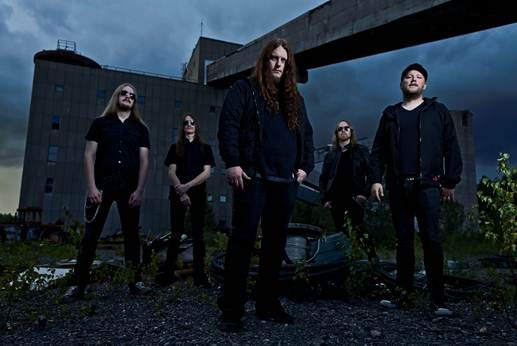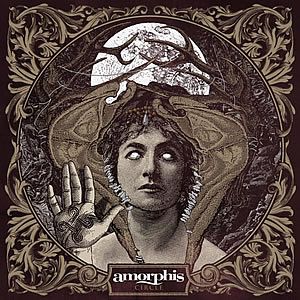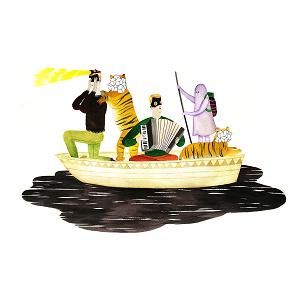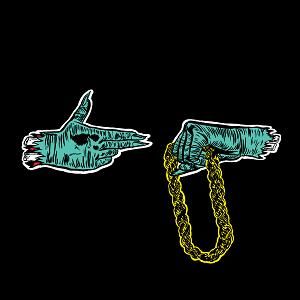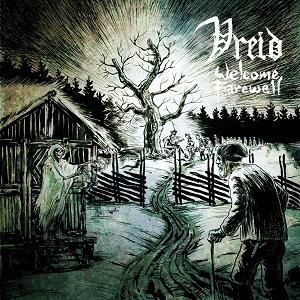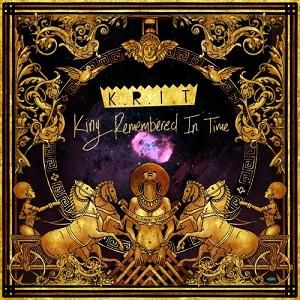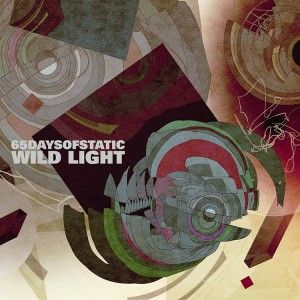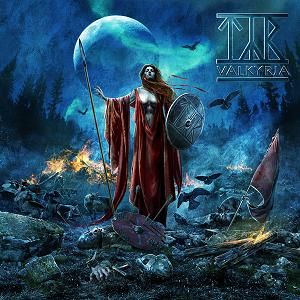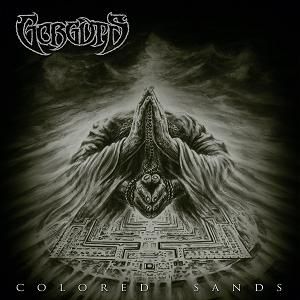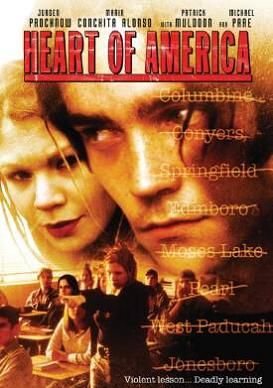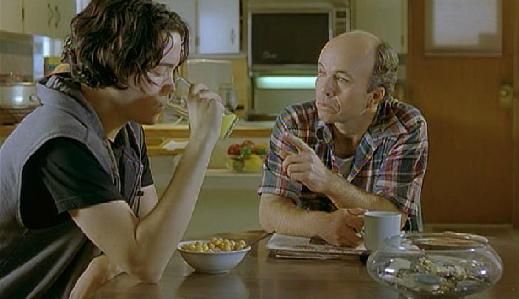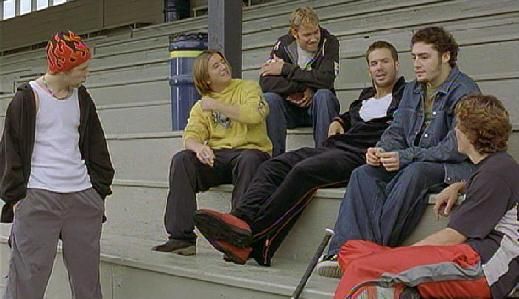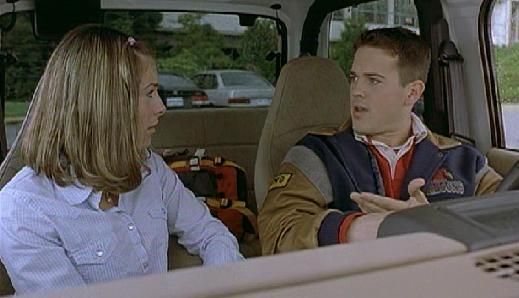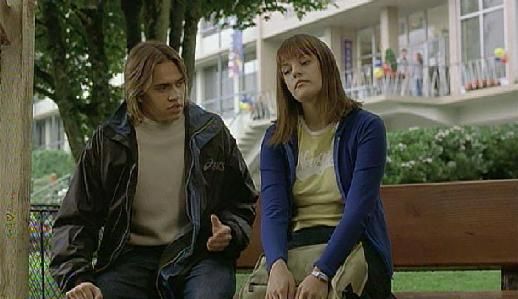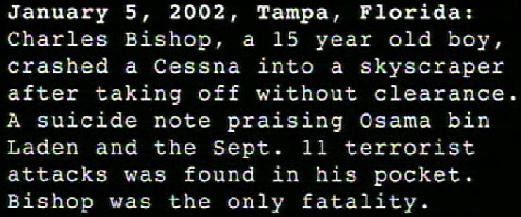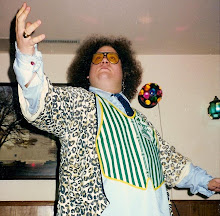The scream you hear... could be your own!
"Dark Skies" (2013) - Amid the onslaught of drably hued flicks with which Blumhouse maintains its current stranglehold on theatrical horror, this title is destined to be forgotten. I've only seen a couple of the studio's other releases (the dreadfully dull "Paranormal Activity" and the OK "Insidious" movies), and this at least seems to break the mold a bit. The besieged family here does not contend with hissing white-eyed CG ghost children or herky-jerky CG devil minions, which is pretty rare for a modern mainstream horror flick. By substituting CG Slenderman aliens, resisting the found-footage shortcut and offering a few well-constructed suspense sequences, this decent kid-safe shocker mitigates its monochromatic cast and settings.
"Maniac" (2012) - Since I often avoid remakes, I was mighty skeptical about this one, and only Alexandre Aja's involvement made me curious enough to check out what Elijah Wood and a buncha Frenchies did to William Lustig's grimy slashterpiece. Guess what? They made a really good movie! It hits many of the same (down)beats as the original while making the slim story more believable for this day and age. Most importantly, the pathetic creepiness that the late Joe Spinnell so expertly brought to the title role translates well for Wood, a more desperate sort of scalp-collecting sicko, especially impressive since you literally see through his eyes most of the time.
"Antiviral" (2012) - Brandon Cronenberg surely made his dad proud with his debut, which takes more than a chip off of Dave's old body horror block. The setup is positively brilliant, a recognizable future where people pay top dollar to contract the illnesses (and eat the synthesized flesh) of the celebrities they worship, to the point that a black market has arisen to meet the demand. From its sickly protagonist (the perfectly cast Caleb Landry Jones), who perpetually infects himself in order to bootleg the bugs, to its sleek, sterile production design, "Antiviral" is an arresting portrait of ickiness and malaise. Not a perfect film, but it helps fill the visceral void David Cronenberg left when he gave up the grossness.
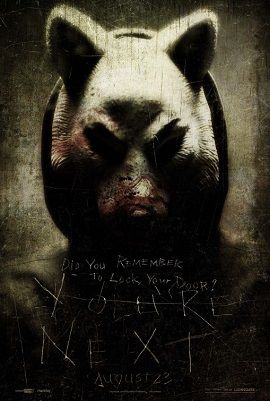 "You're Next" (2011) - This was last year's "Cabin in the Woods": a smartly-plotted indie horror flick with a clever if not unforeseeable twist, which sat on a shelf collecting internet support for years until Lionsgate finally released it. In contrast, this is a much less creative endeavor, with a set-up that largely recalls an Andy Milligan cheapie, in which a family of rich assholes act like assholes to each other in an old mansion while someone kills them off. Thankfully, the execution is more like Eli Roth's, as the setpieces are executed with such tense, messy, painful-looking confidence that you'll be thoroughly engaged while cheering for these unlikeable fucks to bite it.
"You're Next" (2011) - This was last year's "Cabin in the Woods": a smartly-plotted indie horror flick with a clever if not unforeseeable twist, which sat on a shelf collecting internet support for years until Lionsgate finally released it. In contrast, this is a much less creative endeavor, with a set-up that largely recalls an Andy Milligan cheapie, in which a family of rich assholes act like assholes to each other in an old mansion while someone kills them off. Thankfully, the execution is more like Eli Roth's, as the setpieces are executed with such tense, messy, painful-looking confidence that you'll be thoroughly engaged while cheering for these unlikeable fucks to bite it."Howling VI: The Freaks" (1991) - Because I'm a bit of a horror masochist, I'm slowly working my way through this poorly-regarded series of mostly unrelated werewolf sagas. Joe Dante's first is an undisputed classic, and the second two have their fans as certified trashterpieces, but of course things got really dicey once the series went DTV with part 4, the worst one I've seen so far. At least part 6 is the funny kind of bad, concerning a wimpy Brit who occasionally transforms into one of the sorriest hair-beasts in cinema history. A Julian Sands wannabe who can turn into a purple vampire-thingie forces him to be in his old-timey traveling circus, with back-up muscle provided by Antonio "Huggy Bear" Fargas and Tim Burton favorite Deep Roy. The variations in makeup quality, confluence of accents and insipid presentation make this feel like a Full Moon movie of same time, which makes sense since the director was previously a production designer for Charles Band.
"Sleepaway Camp III: Teenage Wasteland" (1989) - Another series I decided to complete, the "Sleepaway Camp" movies took the "Howling" route and immediately got goofy with part 2. In this case, it seems like a more deliberate tone shift. By the late '80s, slasher flicks had been tamed, with the popularity of wisecracking Freddy Krueger and the increasing backlash against horror movie violence causing many a skittish producer to substitute gimmicky, ironic kills. Thus, the original's murderous gender-bending misfit Angela became a perky summer camp enthusiast who gleefully dispatches anyone who sullies the tradition. In this one, where teens from different socioeconomic backgrounds are forced to intermingle, her cartoonish methods include giving someone scouring powder in place of cocaine and playing a diss rap she recorded for (you guessed it) a black camper before she wastes him with tent stakes. Angela's quippy kills usually happen in broad daylight and without consequence, removing any hint of atmosphere or tension, but this lightweight approach surely presaged the subsequent silly series of the toothless '90s (Chucky, Leprechaun, Wishmaster, etc.).
"Beyond Dream's Door" (1989) - "A Nightmare on Elm Street" forever changed the depiction of dreams in horror movies, and this little obscurity really ran with the concept. Essentially an Ohio State student film, it concerns a guy whose bizarre nightmares are trying to obliterate him and everyone he tells about them... because he's been ignoring them! Cue an onslaught of "is-it-real-or-a-dream?" sequences loaded with blunt Freudian imagery and cool phantasmagorical creatures. The plot is (intentionally?) confusing, the acting is stiff and it's not outrageous enough to place it in the "overlooked classics" bin. Still, for the budget, these guys did an astounding job on the copious effects and bravely delivered something outside the ordinary.
"The Vineyard" (1989) - Who doesn't love James Hong? Among the veteran Chinese-American actor's 500+ screen credits, he's directed a mere handful of titles, and curiously they are all nudity-heavy exploitation flicks. This, his lone horror effort, is no exception, the tale of a rich dude (Hong) who invites dumb young actors to his classy Mexican wine chateau, where he proceeds to drain their blood and somehow make a wine which gives him perpetual life. Or maybe his amulet does that, and he just likes to imprison and kill twentysomethings? Only Hong knows! There's nothing too shocking on display here, but the abundance of vomited insects, multicolored laser beams, martial arts dust-ups and unexplained ground-busting zombies make "The Vineyard" a suitable mushy tribute to vintage Shaw Brothers horrors. It could also have just been an excuse for Hong to grope undressed women 1/3 his age. Either way, lots of sleazy fun.
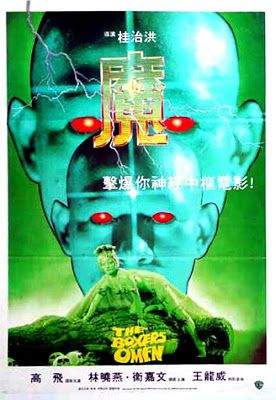 "The Boxer's Omen" (1983) - And speaking of the Shaws, here's one of the Hong Kong dynasty's most beloved horror releases. Of all the movies I've discovered this past year, "The Boxer's Omen" is without a doubt my favorite, a must-see for all fans of strange cinema directed by Kuei Chih-Hung, the madman behind "The Killer Snakes" and the "Hex" trilogy. A boxer is nearly killed by opponent Bolo Yeung, and his revenge-minded brother ends up hunkering down with some monks whose leader is somehow spiritually linked to him and dying from a curse placed by an evil nemesis. Our hero goes to war with the wily black wizard in an ever-escalating conflagration of creepy crawlies, animal parts (both fake and real), supernatural shenanigans, about 20 different colors of slime and even a Hong Kong version of a penanggalan. You cannot possibly prepare yourself for the crazy shit that happens during their hilariously gross, unrelentingly strange, absolutely epic metaphysical battle. It makes weirdo Western contemporaries like "The Visitor" or "The Manitou" look as rote as "Savage Weekend." (Yes, I watched all of those during the last year, too.)
"The Boxer's Omen" (1983) - And speaking of the Shaws, here's one of the Hong Kong dynasty's most beloved horror releases. Of all the movies I've discovered this past year, "The Boxer's Omen" is without a doubt my favorite, a must-see for all fans of strange cinema directed by Kuei Chih-Hung, the madman behind "The Killer Snakes" and the "Hex" trilogy. A boxer is nearly killed by opponent Bolo Yeung, and his revenge-minded brother ends up hunkering down with some monks whose leader is somehow spiritually linked to him and dying from a curse placed by an evil nemesis. Our hero goes to war with the wily black wizard in an ever-escalating conflagration of creepy crawlies, animal parts (both fake and real), supernatural shenanigans, about 20 different colors of slime and even a Hong Kong version of a penanggalan. You cannot possibly prepare yourself for the crazy shit that happens during their hilariously gross, unrelentingly strange, absolutely epic metaphysical battle. It makes weirdo Western contemporaries like "The Visitor" or "The Manitou" look as rote as "Savage Weekend." (Yes, I watched all of those during the last year, too.)"Patrick Still Lives" (1982) - Despite a recent remake by the director of "Not Quite Hollywood," the 1978 Australian psychic killer-thriller "Patrick" is not so well-remembered that a sequel should exist. Well, it made enough scratch for some crafty artiste to commission one of those infamous "in name only" Italian sequels, a fine Eurotrash treat which gets my highest recommendation. Here, a completely different catatonic man named Patrick also dispatches his enemies from the confines of his hospital bed. This guy's methods are a lot gorier, and his victims are prime continental morons. You know the type: seedy, macho meatheads and flimsily-clad floozies (including the Italian Playboy's December 1980 Playmate of the Month) who stand still yelling "No! No!" while something scary slowly advances. This gleefully gratuitous sleazefeast was apparently shot in the same dilapidated Roman castle as Andrea Bianchi's immortal "Burial Ground," and also features that film's aging sexpot Mariangela Giordano, who, like every other female cast member, gets naked as frequently and inexplicably as possible.
"Bloody Birthday" (1981) - If you enjoy movies about children killing people, then this is your jam. Three little bastards are born during a solar eclipse, so, naturally, they start slicing up the neighborhood as soon as they turn 10. Great concept, and it's pretty well executed despite the relative tameness of the murders. The killer kids are pretty much the protagonists, since the "nice" family who tries to expose them are so ancillary and forgettable, and it helps that the young actors really camp up the evilness. The victim most worth remembering is onetime MTV fixture Julie Brown, discarding her shirt and getting shot in the eye with an arrow to the amusement of all. Also worth noting: two of the kids who played the pre-teen predators reunited for the flashback sequences in the following year's amazing "Hospital Massacre."
"Nightmare" (1981) - Thanks to the fine folks who programmed this year's Music Box of Horrors, I finally finished watching this cult psycho slasher, more than 20 years after I rented it under the lurid VHS retitle "Blood Splash," fell asleep watching it and took it back without feeling compelled to complete it. I don't know what was smoking back then (Camel Wides?), but I should have paid the late fee. This grimefest is essentially a poor man's "Maniac," where we follow a creep around Times Square while he's plagued by nightmares about the time he caught his dad banging some lady and he had to chop them up with an ax. He embarks on a killing spree down the coast, spending his downtime screaming to himself and literally foaming at the mouth. Some cutaways to the family he's stalking cut the unrelenting grimness, but "Nightmare" should be remembered among the darkest relics of the Video Nasty era.
"Barracuda" (1978) - A.k.a. "The Lucifer Project," which is pretty much an equally appropriate title. Bill Kerwin, who appeared in a lot of Herschell Gordon Lewis' Floridian productions and whose brother Harry directed this, stars as a weathered sheriff in a small town where the populace is suddenly getting nibbled by a bunch of barracudas. It's clear that the "Jaws"ploitation element was of secondary importance to its creators than the half-baked government eco-scandal that eventually takes over the plot. While not among the best of the post-Spielberg water creature bonanza, a lot of vintage southern-fried drive-in charm helps "Barracuda" along, and the ending is far more downbeat that I expected from such a cornpone type of flick. Man, those '70s!
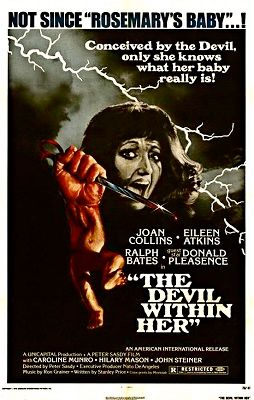 "The Devil Within Her" (1975) - Many things endeared me to this movie before I watched it, particularly its awesome poster, with the tagline: "Not since 'Rosemary's Baby!'" I love those old "Not since..." taglines, which essentially tell you "this is a bald-faced ripoff, yet the connection is too tenuous to elaborate." Either that, or the copy writer was scared speechless after viewing it? Anyway, I could hardly resist a movie where the bitchy villainess from "Dynasty" plays a stripper whose baby gets cursed by a midget co-worker because she won't sleep with him. The kid starts scratching people and causing minor mayhem. Sadly, this British job is pretty tame and doesn't earn that amazing promotional artwork... that little hand beastie with the scissors is not even implied in the movie!
"The Devil Within Her" (1975) - Many things endeared me to this movie before I watched it, particularly its awesome poster, with the tagline: "Not since 'Rosemary's Baby!'" I love those old "Not since..." taglines, which essentially tell you "this is a bald-faced ripoff, yet the connection is too tenuous to elaborate." Either that, or the copy writer was scared speechless after viewing it? Anyway, I could hardly resist a movie where the bitchy villainess from "Dynasty" plays a stripper whose baby gets cursed by a midget co-worker because she won't sleep with him. The kid starts scratching people and causing minor mayhem. Sadly, this British job is pretty tame and doesn't earn that amazing promotional artwork... that little hand beastie with the scissors is not even implied in the movie!"Black Christmas" (1974) - I had not seen this classic Canadian proto-slasher since my college days. Back then, I found it kind of slow and docile, a standard tale of sorority girls being dispatched with lots of talk in between. Mind you, I also felt that "Halloween" seemed pretty damned basic upon first viewing, but that's because I'd already seen a bunch of Jason and Freddy flicks by the time I got around to it in high school. Revisiting "Black Christmas" on Blu-ray was the way to go. It's quirky and beautiful to look at and, despite my affection for "Deathdream," admittedly the best of Bob Clark's horror flicks. This holiday season, if you are craving that warm, fuzzy '70s atmosphere, give yourself a present and cozy up with a creepy classic that has the class to not overexplain itself.
"Female Vampire" (1973) - Every year or two, I get in that special mood for a Jesus Franco picture. The late Franco was one of the first continental libertines to mate artsy erotica with stag film sleaze and cram the mess into every no-budget horror film orifice he could find. This venture is a celluloid love letter to Lina Romay, his longtime filmmaking partner, wife and muse, who spends most of the film either rubbing her naked body on stuff or staring languidly upon the European landscape, questioning and lamenting her vampiric fate. Like a lot of Franco's films, this exists in several versions, from a low-sex/high-horror variant (entitled "Erotikill") to a hardcore porn cut. Some prints even bear the original, more appropriate and ultimately superior title: "The Bare Breasted Countess."
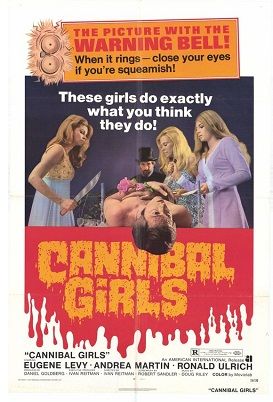 "Cannibal Girls" (1972) - Future "SCTV" fixtures Andrea Martin (seen 2 years later in "Black Christmas") and Eugene Levy star in Ivan "Ghostbusters" Reitman's directorial debut. They're adorably young and improvisational playing a young couple waylaid in a small, snowbound town, where they must contend with a local legend about three comely young lasses who used to seduce men, then gobble their guts up. With its paint store gore, cockeyed humor and senseless psychedelic trappings, this often feels like a spirited Canadian ode to the great Herschell Gordon Lewis, and the wintry rural setting gives it that special austerity unique to Canucksploitation. Best of all is the hilariously obnoxious "warning bell" noise that goes off just before something scary or sexy occurs... the DVD lets you turn that off, but why would you?
"Cannibal Girls" (1972) - Future "SCTV" fixtures Andrea Martin (seen 2 years later in "Black Christmas") and Eugene Levy star in Ivan "Ghostbusters" Reitman's directorial debut. They're adorably young and improvisational playing a young couple waylaid in a small, snowbound town, where they must contend with a local legend about three comely young lasses who used to seduce men, then gobble their guts up. With its paint store gore, cockeyed humor and senseless psychedelic trappings, this often feels like a spirited Canadian ode to the great Herschell Gordon Lewis, and the wintry rural setting gives it that special austerity unique to Canucksploitation. Best of all is the hilariously obnoxious "warning bell" noise that goes off just before something scary or sexy occurs... the DVD lets you turn that off, but why would you?"Frogs" (1972) - Just like "You're Next," "Bay of Blood," "The Ghastly Ones" and many other gems, this is the tale of a family of odious rich assholes stuck together in an old house. Here, the family of bickering, pollution-happy jackasses and their guest, a young Sam Elliot, get attacked by every creature in the adjacent Floridian swamp. I first saw "Frogs" as a child, on broadcast TV at my grandparents' house, and what really boggled me was that the amphibious title stars are just the apparent ringleaders. These douchebags are beset by snakes crawling around their chandeliers, lizards knocking over jars of poison chemicals and a shitstorm of web-spinning tarantulas falling out of a tree. Plus, a killer alligator. And birds. And a turtle. The tarantula bit really fucked me up as a kid, snuck as it was into a movie I thought was about killer frogs. Today I can enjoy it as far tamer, stagier and (intentionally?) funnier than I noticed then.
"The Legend of Boggy Creek" (1972) - One of very few films I would call fascinatingly boring, Charles B. Pierce's classic flim-flam mixes fake documentary footage and staged "re-enactments" to investigate a Bigfoot who supposedly hangs out, makes a freaky noise and spooks the good folks of Fouke, Arkansas. This was Pierce's first movie, for which he built his own camera, and he went on to specialize in drive-in fare that emphasized the regional nature of that once-flourishing distribution model. As a horror flick, it's just alarming enough to strain the boundary of its G rating; Pierce's subsequent R-rated docudrama "The Town That Dreaded Sundown" is only slightly grimmer. "Boggy Creek" more effectively and affectionately presents a slice of early '70s life around the small town near the Arkansas/Texas border, with a cast of non-actors portraying either themselves or fictional versions of themselves.
"The Dunwich Horror" (1970) - Director Daniel Haller's second and final attempt to put H.P. Lovecraft on the screen is a nice-looking, colorful movie, which is expected since Haller was the art director on many of the Roger Corman/Vincent Price Poe pictures. Unfortunately, young Dean Stockwell twirling his vintage 'stache as a nefarious Necronomicon-crazed sorcerer gets canceled out by slumming former teen idol Sandra Dee, who only convinces when her dull dishrag of a heroine is supposed to be in a medicated haze. Add Ed Begley Sr. as her elderly savior and you have a forgettably inert compromise that's a casualty of when it was made, stuck between the old-fashioned gothic shockers of the '60s and a modern setting that begs for a more lurid treatment.

 Katatonia became my favorite band in the early '00s, and they remained there with their ninth album, 2012's
Katatonia became my favorite band in the early '00s, and they remained there with their ninth album, 2012's  Dead End Kings was Katatonia's first album after their first line-up change in more than a decade. The Norrman brothers ostensibly left Katatonia to attend to family stuff, but have since busied themselves in a handful of uncomplicated doom and/or death metal acts, such as the excellent revival of
Dead End Kings was Katatonia's first album after their first line-up change in more than a decade. The Norrman brothers ostensibly left Katatonia to attend to family stuff, but have since busied themselves in a handful of uncomplicated doom and/or death metal acts, such as the excellent revival of 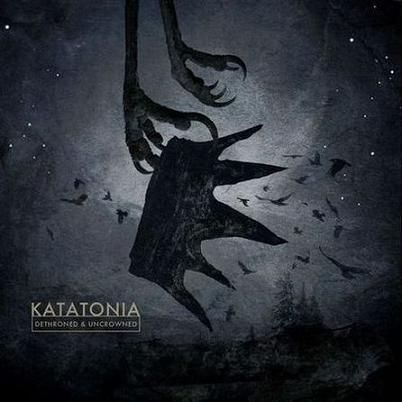 Even after a year of assimilation, those little moments still had me coming back, and I was far from bored with the album. I also wasn't asking for it to be re-recorded in an even mellower fashion. Even as I dutifully contributed to the
Even after a year of assimilation, those little moments still had me coming back, and I was far from bored with the album. I also wasn't asking for it to be re-recorded in an even mellower fashion. Even as I dutifully contributed to the 